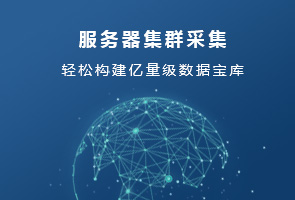前景提要
【围观】麒麟芯片遭打压成绝版,华为亿元投入又砸向了哪里?>>>
维表JOIN-绕不过去的业务场景
在Flink 流处理过程中,经常需要和外部系统进行交互,用维度表补全事实表中的字段。
例如:在电商场景中,需要一个商品的skuid去关联商品的一些属性,例如商品所属行业、商品的生产厂家、生产厂家的一些情况; 在物流场景中,知道包裹id,需要去关联包裹的行业属性、发货信息、收货信息等等。
默认情况下,在Flink的MapFunction中,单个并行只能用同步方式去交互: 将请求发送到外部存储,IO阻塞,等待请求返回,然后继续发送下一个请求。这种同步交互的方式往往在网络等待上就耗费了大量时间。为了提高处理效率,可以增加MapFunction的并行度,但增加并行度就意味着更多的资源,并不是一种非常好的解决方式。
Async I/O异步非阻塞请求
Flink 在1.2中引入了Async I/O,在异步模式下,将IO操作异步化,单个并行可以连续发送多个请求,哪个请求先返回就先处理,从而在连续的请求间不需要阻塞式等待,大大提高了流处理效率。
Async I/O 是阿里巴巴贡献给社区的一个呼声非常高的特性,解决与外部系统交互时网络延迟成为了系统瓶颈的问题。
图中棕色的长条表示等待时间,可以发现网络等待时间极大地阻碍了吞吐和延迟。为了解决同步访问的问题,异步模式可以并发地处理多个请求和回复。也就是说,你可以连续地向数据库发送用户a、b、c等的请求,与此同时,哪个请求的回复先返回了就处理哪个回复,从而连续的请求之间不需要阻塞等待,如上图右边所示。这也正是 Async I/O 的实现原理。
详细的原理可以参考文末给出的第一个链接,来自阿里巴巴云邪的分享。
一个简单的例子如下: public class AsyncIOFunctionTest { public static void main(String[] args) throws Exception { StreamExecutionEnvironment env = StreamExecutionEnvironment.getExecutionEnvironment(); env.setStreamTimeCharacteristic(TimeCharacteristic.EventTime); env.setParallelism(1); Properties p = new Properties(); p.setProperty("bootstrap.servers", "localhost:9092"); DataStreamSource<string> ds = env.addSource(new FlinkKafkaConsumer010<string>("order", new SimpleStringSchema(), p)); ds.print(); SingleOutputStreamOperator<order> order = ds .map(new MapFunction<string, order>() { @Override public Order map(String value) throws Exception { return new Gson().fromJson(value, Order.class); } }) .assignTimestampsAndWatermarks(new AscendingTimestampExtractor<order>() { @Override public long extractAscendingTimestamp(Order element) { try { return element.getOrderTime(); } catch (Exception e) { e.printStackTrace(); } return 0; } }) .keyBy(new KeySelector<order, string>() { @Override public String getKey(Order value) throws Exception { return value.getUserId(); } }) .window(TumblingEventTimeWindows.of(Time.minutes(10))) .maxBy("orderTime"); SingleOutputStreamOperator<tuple7<string, string, integer, long>> operator = AsyncDataStream .unorderedWait(order, new RichAsyncFunction<order, tuple7<string, string, integer, long>>() { private Connection connection; @Override public void open(Configuration parameters) throws Exception { super.open(parameters); Class.forName("com.mysql.jdbc.Driver"); connection = DriverManager.getConnection("url", "user", "pwd"); connection.setAutoCommit(false); } @Override public void asyncInvoke(Order input, ResultFuture<tuple7<string, string, integer, long>> resultFuture) throws Exception { List<tuple7<string, string, integer, long>> list = new ArrayList<>(); // 在 asyncInvoke 方法中异步查询数据库 String userId = input.getUserId(); Statement statement = connection.createStatement(); ResultSet resultSet = statement.executeQuery("select name,age,sex from user where userid=" + userId); if (resultSet != null && resultSet.next()) { String name = resultSet.getString("name"); int age = resultSet.getInt("age"); String sex = resultSet.getString("sex"); Tuple7<string, string, integer, long> res = Tuple7.of(userId, name, age, sex, input.getOrderId(), input.getPrice(), input.getOrderTime()); list.add(res); } // 将数据搜集 resultFuture.complete(list); } @Override public void close() throws Exception { super.close(); if (connection != null) { connection.close(); } } }, 5000, TimeUnit.MILLISECONDS,100); operator.print(); env.execute("AsyncIOFunctionTest"); } }
上述代码中,原始订单流来自Kafka,去关联维度表将订单的用户信息取出来。从上面示例中可看到,我们在open()中创建连接对象,在close()方法中关闭连接,在RichAsyncFunction的asyncInvoke()方法中,直接查询数据库操作,并将数据返回出去。这样一个简单异步请求就完成了。
Async I/O的原理和基本用法
简单的来说,使用 Async I/O 对应到 Flink 的 API 就是 RichAsyncFunction 这个抽象类,继层这个抽象类实现里面的open(初始化),asyncInvoke(数据异步调用),close(停止的一些操作)方法,最主要的是实现asyncInvoke 里面的方法。
我们先来看一个使用Async I/O的模板方法: // This example implements the asynchronous request and callback with Futures that have the // interface of Java 8's futures (which is the same one followed by Flink's Future) /** * An implementation of the 'AsyncFunction' that sends requests and sets the callback. */ class AsyncDatabaseRequest extends RichAsyncFunction<string, tuple2<string, string>> { /** The database specific client that can issue concurrent requests with callbacks */ private transient DatabaseClient client; @Override public void open(Configuration parameters) throws Exception { client = new DatabaseClient(host, post, credentials); } @Override public void close() throws Exception { client.close(); } @Override public void asyncInvoke(String key, final ResultFuture<tuple2<string, string>> resultFuture) throws Exception { // issue the asynchronous request, receive a future for result final Future<string> result = client.query(key); // set the callback to be executed once the request by the client is complete // the callback simply forwards the result to the result future CompletableFuture.supplyAsync(new Supplier<string>() { @Override public String get() { try { return result.get(); } catch (InterruptedException | ExecutionException e) { // Normally handled explicitly. return null; } } }).thenAccept( (String dbResult) -> { resultFuture.complete(Collections.singleton(new Tuple2<>(key, dbResult))); }); } } // create the original stream DataStream<string> stream = ...; // apply the async I/O transformation DataStream<tuple2<string, string>> resultStream = AsyncDataStream.unorderedWait(stream, new AsyncDatabaseRequest(), 1000, TimeUnit.MILLISECONDS, 100);
假设我们一个场景是需要进行异步请求其他数据库,那么要实现一个通过异步I/O来操作数据库还需要三个步骤: 1、实现用来分发请求的AsyncFunction 2、获取操作结果的callback,并将它提交到AsyncCollector中 3、将异步I/O操作转换成DataStream 其中的两个重要的参数:
Timeouttimeout 定义了异步操作过了多长时间后会被丢弃,这个参数是防止了死的或者失败的请求 Capacity 这个参数定义了可以同时处理多少个异步请求。虽然异步I/O方法会带来更好的吞吐量,但是算子仍然会成为流应用的瓶颈。超过限制的并发请求数量会产生背压。
几个需要注意的点: 使用Async I/O,需要外部存储有支持异步请求的客户端。 使用Async I/O,继承RichAsyncFunction(接口AsyncFunction<in, out>的抽象类),重写或实现open(建立连接)、close(关闭连接)、asyncInvoke(异步调用)3个方法即可。 使用Async I/O, 最好结合缓存一起使用,可减少请求外部存储的次数,提高效率。 Async I/O 提供了Timeout参数来控制请求最长等待时间。默认,异步I/O请求超时时,会引发异常并重启或停止作业。 如果要处理超时,可以重写AsyncFunction#timeout方法。 Async I/O 提供了Capacity参数控制请求并发数,一旦Capacity被耗尽,会触发反压机制来抑制上游数据的摄入。 Async I/O 输出提供乱序和顺序两种模式。 乱序, 用AsyncDataStream.unorderedWait(...) API,每个并行的输出顺序和输入顺序可能不一致。 顺序, 用AsyncDataStream.orderedWait(...) API,每个并行的输出顺序和输入顺序一致。为保证顺序,需要在输出的Buffer中排序,该方式效率会低一些。
Flink 1.9 的优化
由于新合入的 Blink 相关功能,使得 Flink 1.9 实现维表功能很简单。 如果你要使用该功能,那就需要自己引入 Blink 的 Planner。 <dependency> <groupid>org.apache.flink</groupid> <artifactid>flink-table-planner-blink_${scala.binary.version}</artifactid> <version>${flink.version}</version> </dependency>
然后我们只要自定义实现 LookupableTableSource 接口,同时实现里面的方法就可以进行,下面来分析一下 LookupableTableSource的代码: public interface LookupableTableSource<t> extends TableSource<t> { TableFunction<t> getLookupFunction(String[] lookupKeys); AsyncTableFunction<t> getAsyncLookupFunction(String[] lookupKeys); boolean isAsyncEnabled(); }
这三个方法分别是: isAsyncEnabled 方法主要表示该表是否支持异步访问外部数据源获取数据,当返回 true 时,那么在注册到 TableEnvironment 后,使用时会返回异步函数进行调用,当返回 false 时,则使同步访问函数。 getLookupFunction 方法返回一个同步访问外部数据系统的函数,什么意思呢,就是你通过 Key 去查询外部数据库,需要等到返回数据后才继续处理数据,这会对系统处理的吞吐率有影响。 getAsyncLookupFunction 方法则是返回一个异步的函数,异步访问外部数据系统,获取数据,这能极大的提升系统吞吐率。
我们抛开同步访问函数不管,对于getAsyncLookupFunction会返回异步访问外部数据源的函数,如果你想使用异步函数,前提是 LookupableTableSource 的 isAsyncEnabled 方法返回 true 才能使用。使用异步函数访问外部数据系统,一般是外部系统有异步访问客户端,如果没有的话,可以自己使用线程池异步访问外部系统。例如: public class MyAsyncLookupFunction extends AsyncTableFunction<row> { private transient RedisAsyncCommands<string, string> async; @Override public void open(FunctionContext context) throws Exception { RedisClient redisClient = RedisClient.create("redis://127.0.0.1:6379"); StatefulRedisConnection<string, string> connection = redisClient.connect(); async = connection.async(); } public void eval(CompletableFuture<collection<row>> future, Object... params) { redisFuture.thenAccept(new Consumer<string>() { @Override public void accept(String value) { future.complete(Collections.singletonList(Row.of(key, value))); } }); } }
一个完整的例子如下:
Main方法: import org.apache.flink.api.common.functions.MapFunction; import org.apache.flink.api.common.serialization.SimpleStringSchema; import org.apache.flink.api.common.typeinfo.TypeInformation; import org.apache.flink.api.common.typeinfo.Types; import org.apache.flink.api.java.typeutils.RowTypeInfo; import org.apache.flink.api.java.utils.ParameterTool; import org.apache.flink.streaming.api.datastream.DataStream; import org.apache.flink.streaming.api.environment.StreamExecutionEnvironment; import org.apache.flink.streaming.connectors.kafka.FlinkKafkaProducer011; import org.apache.flink.table.api.EnvironmentSettings; import org.apache.flink.table.api.Table; import org.apache.flink.table.api.java.StreamTableEnvironment; import org.apache.flink.types.Row; import org.junit.Test; import java.util.Properties; public class LookUpAsyncTest { @Test public void test() throws Exception { LookUpAsyncTest.main(new String[]{}); } public static void main(String[] args) throws Exception { StreamExecutionEnvironment env = StreamExecutionEnvironment.getExecutionEnvironment(); //env.setParallelism(1); EnvironmentSettings settings = EnvironmentSettings.newInstance().useBlinkPlanner().inStreamingMode().build(); StreamTableEnvironment tableEnv = StreamTableEnvironment.create(env, settings); final ParameterTool params = ParameterTool.fromArgs(args); String fileName = params.get("f"); DataStream<string> source = env.readTextFile("hdfs://172.16.44.28:8020" + fileName, "UTF-8"); TypeInformation[] types = new TypeInformation[]{Types.STRING, Types.STRING, Types.LONG}; String[] fields = new String[]{"id", "user_click", "time"}; RowTypeInfo typeInformation = new RowTypeInfo(types, fields); DataStream<row> stream = source.map(new MapFunction<string, row>() { private static final long serialVersionUID = 2349572543469673349L; @Override public Row map(String s) { String[] split = s.split(","); Row row = new Row(split.length); for (int i = 0; i < split.length; i++) { Object value = split[i]; if (types[i].equals(Types.STRING)) { value = split[i]; } if (types[i].equals(Types.LONG)) { value = Long.valueOf(split[i]); } row.setField(i, value); } return row; } }).returns(typeInformation); tableEnv.registerDataStream("user_click_name", stream, String.join(",", typeInformation.getFieldNames()) + ",proctime.proctime"); RedisAsyncLookupTableSource tableSource = RedisAsyncLookupTableSource.Builder.newBuilder() .withFieldNames(new String[]{"id", "name"}) .withFieldTypes(new TypeInformation[]{Types.STRING, Types.STRING}) .build(); tableEnv.registerTableSource("info", tableSource); String sql = "select t1.id,t1.user_click,t2.name" + " from user_click_name as t1" + " join info FOR SYSTEM_TIME AS OF t1.proctime as t2" + " on t1.id = t2.id"; Table table = tableEnv.sqlQuery(sql); DataStream<row> result = tableEnv.toAppendStream(table, Row.class); DataStream<string> printStream = result.map(new MapFunction<row, string>() { @Override public String map(Row value) throws Exception { return value.toString(); } }); Properties properties = new Properties(); properties.setProperty("bootstrap.servers", "127.0.0.1:9094"); FlinkKafkaProducer011<string> kafkaProducer = new FlinkKafkaProducer011<>( "user_click_name", new SimpleStringSchema(), properties); printStream.addSink(kafkaProducer); tableEnv.execute(Thread.currentThread().getStackTrace()[1].getClassName()); } }
RedisAsyncLookupTableSource方法: import org.apache.flink.api.common.typeinfo.TypeInformation; import org.apache.flink.api.java.typeutils.RowTypeInfo; import org.apache.flink.streaming.api.datastream.DataStream; import org.apache.flink.streaming.api.environment.StreamExecutionEnvironment; import org.apache.flink.table.api.TableSchema; import org.apache.flink.table.functions.AsyncTableFunction; import org.apache.flink.table.functions.TableFunction; import org.apache.flink.table.sources.LookupableTableSource; import org.apache.flink.table.sources.StreamTableSource; import org.apache.flink.table.types.DataType; import org.apache.flink.table.types.utils.TypeConversions; import org.apache.flink.types.Row; public class RedisAsyncLookupTableSource implements StreamTableSource<row>, LookupableTableSource<row> { private final String[] fieldNames; private final TypeInformation[] fieldTypes; public RedisAsyncLookupTableSource(String[] fieldNames, TypeInformation[] fieldTypes) { this.fieldNames = fieldNames; this.fieldTypes = fieldTypes; } //同步方法 @Override public TableFunction<row> getLookupFunction(String[] strings) { return null; } //异步方法 @Override public AsyncTableFunction<row> getAsyncLookupFunction(String[] strings) { return MyAsyncLookupFunction.Builder.getBuilder() .withFieldNames(fieldNames) .withFieldTypes(fieldTypes) .build(); } //开启异步 @Override public boolean isAsyncEnabled() { return true; } @Override public DataType getProducedDataType() { return TypeConversions.fromLegacyInfoToDataType(new RowTypeInfo(fieldTypes, fieldNames)); } @Override public TableSchema getTableSchema() { return TableSchema.builder() .fields(fieldNames, TypeConversions.fromLegacyInfoToDataType(fieldTypes)) .build(); } @Override public DataStream<row> getDataStream(StreamExecutionEnvironment environment) { throw new UnsupportedOperationException("do not support getDataStream"); } public static final class Builder { private String[] fieldNames; private TypeInformation[] fieldTypes; private Builder() { } public static Builder newBuilder() { return new Builder(); } public Builder withFieldNames(String[] fieldNames) { this.fieldNames = fieldNames; return this; } public Builder withFieldTypes(TypeInformation[] fieldTypes) { this.fieldTypes = fieldTypes; return this; } public RedisAsyncLookupTableSource build() { return new RedisAsyncLookupTableSource(fieldNames, fieldTypes); } } }
MyAsyncLookupFunction import io.lettuce.core.RedisClient; import io.lettuce.core.RedisFuture; import io.lettuce.core.api.StatefulRedisConnection; import io.lettuce.core.api.async.RedisAsyncCommands; import org.apache.flink.api.common.typeinfo.TypeInformation; import org.apache.flink.api.java.typeutils.RowTypeInfo; import org.apache.flink.table.functions.AsyncTableFunction; import org.apache.flink.table.functions.FunctionContext; import org.apache.flink.types.Row; import java.util.Collection; import java.util.Collections; import java.util.concurrent.CompletableFuture; import java.util.function.Consumer; public class MyAsyncLookupFunction extends AsyncTableFunction<row> { private final String[] fieldNames; private final TypeInformation[] fieldTypes; private transient RedisAsyncCommands<string, string> async; public MyAsyncLookupFunction(String[] fieldNames, TypeInformation[] fieldTypes) { this.fieldNames = fieldNames; this.fieldTypes = fieldTypes; } @Override public void open(FunctionContext context) { //配置redis异步连接 RedisClient redisClient = RedisClient.create("redis://127.0.0.1:6379"); StatefulRedisConnection<string, string> connection = redisClient.connect(); async = connection.async(); } //每一条流数据都会调用此方法进行join public void eval(CompletableFuture<collection<row>> future, Object... paramas) { //表名、主键名、主键值、列名 String[] info = {"userInfo", "userId", paramas[0].toString(), "userName"}; String key = String.join(":", info); RedisFuture<string> redisFuture = async.get(key); redisFuture.thenAccept(new Consumer<string>() { @Override public void accept(String value) { future.complete(Collections.singletonList(Row.of(key, value))); //todo // BinaryRow row = new BinaryRow(2); } }); } @Override public TypeInformation<row> getResultType() { return new RowTypeInfo(fieldTypes, fieldNames); } public static final class Builder { private String[] fieldNames; private TypeInformation[] fieldTypes; private Builder() { } public static Builder getBuilder() { return new Builder(); } public Builder withFieldNames(String[] fieldNames) { this.fieldNames = fieldNames; return this; } public Builder withFieldTypes(TypeInformation[] fieldTypes) { this.fieldTypes = fieldTypes; return this; } public MyAsyncLookupFunction build() { return new MyAsyncLookupFunction(fieldNames, fieldTypes); } } }
十分需要注意的几个点:
1、 外部数据源必须是异步客户端:如果是线程安全的(多个客户端一起使用),你可以不加 transient 关键字,初始化一次。否则,你需要加上 transient,不对其进行初始化,而在 open 方法中,为每个 Task 实例初始化一个。
2、eval 方法中多了一个 CompletableFuture,当异步访问完成时,需要调用其方法进行处理。比如上面例子中的: redisFuture.thenAccept(new Consumer<string>() { @Override public void accept(String value) { future.complete(Collections.singletonList(Row.of(key, value))); } });
3、社区虽然提供异步关联维度表的功能,但事实上大数据量下关联外部系统维表仍然会成为系统的瓶颈,所以一般我们会在同步函数和异步函数中加入缓存。综合并发、易用、实时更新和多版本等因素考虑,Hbase是最理想的外部维表。
参考文章: http://wuchong.me/blog/2017/05/17/flink-internals-async-io/# https://www.jianshu.com/p/d8f99d94b761 https://cwiki.apache.org/confluence/pages/viewpage.action?pageId=65870673 https://www.jianshu.com/p/7ce84f978ae0
声明:本号所有文章除特殊注明,都为原创,公众号读者拥有优先阅读权,未经作者本人允许不得转载,否则追究侵权责任。
关注我的公众号,后台回复【JAVAPDF】获取200页面试题! 5万人关注的大数据成神之路,不来了解一下吗? 5万人关注的大数据成神之路,真的不来了解一下吗? 5万人关注的大数据成神之路,确定真的不来了解一下吗?
欢迎您关注 《大数据成神之路》
</string></row></string></string></collection<row></string,></string,></row></row></row></row></row></row></string></row,></string></row></string,></row></string></string></collection<row></string,></string,></row></t></t></t></t></in,></tuple2<string,></string></string></string></tuple2<string,></string,></string,></tuple7<string,></tuple7<string,></order,></tuple7<string,></order,></order></string,></order></string></string>


 022-2345 2937
022-2345 2937 185 2247 0110
185 2247 0110 business@forenose.com
business@forenose.com























 022-2345 2937
022-2345 2937 185 2247 0110
185 2247 0110 business@forenose.com
business@forenose.com 前嗅大数据
前嗅大数据